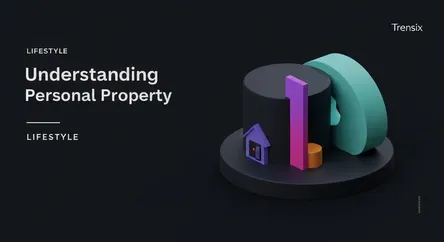Lifestyle
Understanding Personal Property

Learn the key differences between personal and real property. Understand what qualifies as personal property and why it's crucial for home sales and insurance.
What is it?
Personal property, also known as chattel, refers to any movable asset that is not permanently attached to land or a building. Unlike real property (real estate), which includes land and anything affixed to it, personal property can be easily relocated. Common examples include furniture, vehicles, electronics, jewelry, and clothing. This category is further divided into tangible items, which have a physical form, and intangible items like stocks, bonds, and intellectual property rights. The key distinction is its mobility; if you can move it without damaging the real estate, it's likely personal property.
Why is it trending?
A clear understanding of personal property is increasingly important in today's dynamic real estate market. As people buy and sell homes, disputes often arise over items like smart home devices, custom window treatments, or high-end appliances. Sellers and buyers must explicitly state in contracts which items are included in the sale to avoid conflict. Furthermore, with the rise of estate planning and the need for comprehensive insurance coverage, accurately inventorying and valuing personal property has become a financial priority for many households.
How does it affect people?
The distinction between personal and real property has significant legal and financial implications. In a home sale, personal property is not automatically included unless specified in the purchase agreement. For insurance purposes, homeowner's or renter's policies provide specific coverage for personal property against theft or damage. It also plays a critical role in taxation, wills, and divorce settlements, where assets must be clearly categorized and valued to ensure a fair and legal distribution. Misclassifying an item can lead to ownership disputes and unexpected financial loss.